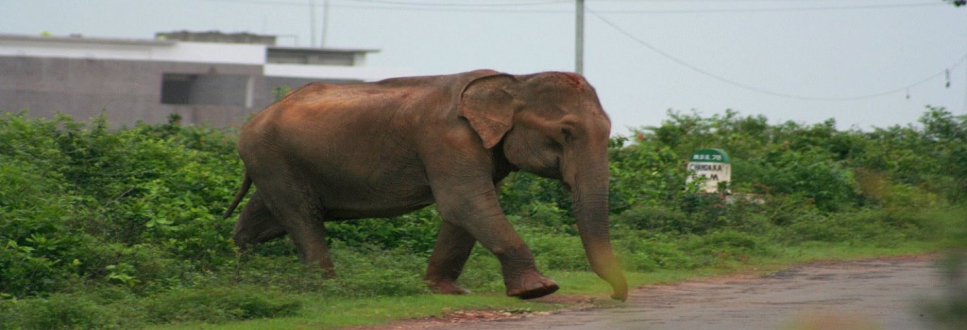Citizen Chapter
Wild Orissa Team with BNHS at Balugoan, Odisha
Wild Orissa contingent is participating in the 2014 Chilka Waterbirds Census. The bird census being organised by the Chilka Wildlife Division has the scientists from the Bombay Natural History Society (BNHS) providing expertise. Wild Orissa is associated with waterbirds census and in community level conservation initiatives in Chilka Lake (Odisha-India) since 1996. This lake attracts lakhs of waterbirds including migratory and resident. Their numbers peak during winters when birds from abroad fly in. The BNHS team is headed by Dr. S. Balachandran. Here the team members from Wild Orissa and BNHS have gathered at Balugaon (headquarters of the Chilka Wildlife Division)
 |
SURPRISE PATROLLING BY WILD ORISSA MEMBERS-SNARES AND TRAPS FOR TRAPPING WILDLIFE RECOVERED
Members from Wild Orissa undertook a surprise patrol in a forest habitat around 20 kms from the Bhubaneswar (Odisha) city yesterday. During the said trip snares and traps set for trapping wildlife were recovered.
Hunting of wildlife takes a severe toll of wild animals and birds in the state of Odisha. Engaging with local communities and poachers and hunters has been one of Wild Orissa's approaches in combating this menace. Shri Gadadhar, Shri Nanda Kishore Bhujabal, Shri Akash Ranjan Rath and Shri Chinmaya Bhujabal took part.
 |
WORLD WETLANDS DAY 2014 CELEBRATED
WORLD WETLANDS DAY 2014 CELEBRATED
The World Wetlands Day 2014 was celebrated today i.e. on the 2nd February 2014 at the Padma Kumuda Vidyaniketan, Nuapada (near Mangalajodi) in Khurda district in Odisha. This event was organized by the Chilika Development Authority and Odisha Forest Department in association with Wild Orissa and Pallishree, Sri Sri Mahavir Pakshi Surakshya Samiti of Mangalajodi and students and teachers of the Padma Kumuda Vidyaniketan.
Wetlands are areas where water is the primary factor controlling the environment and the associated plant and animal life. Wetlands, natural and manmade, freshwater or brackish, provide numerous ecological services. The density of birds, in particular, is an accurate indication of the ecological health of a particular wetland. However, unsustainable use of wetlands without reckoning of their assimilative capacity constitutes major threat to the conservation and management of these vital biodiversity rich areas. Thus, restricting the prospects of future generation to utilize the benefits of the ecosystem services provided by these wetlands.
World Wetlands Day is celebrated every year on February 2, marking the date of the signing of the Convention on Wetlands, called Ramsar Convention, on 2 February 1971, in the Iranian city of Ramsar on the shores of the Caspian Sea. WWD was celebrated for the first time in 1997 and made an encouraging beginning. Each year, government agencies, non-governmental organizations, and groups of citizens at all levels of the community have taken advantage of the opportunity to undertake actions aimed at raising public awareness of wetland values and benefits in general and the Ramsar Convention in particular.
In today’s function Shri Ajit Kumar Patnaik I.F.S. CEO of Chilika Development Authority, Shri S.B.Samanta I.F.S. Director of Environment Odisha, Shri B.P.Acharya I.F.S. Divisional Forest Officer Chilka Wildlife Division, Shri A.K.Patnaik I.F.S. DFO Khurda Division and Shri Nanda Kishore Bhujabal Vice Chairman Wild Orissa were important dignitaries present.
Chilka Lake is one of the very important wetland in the country. It has been listed as a wetland of National Importance. Wild Orissa has been working for conservation of the bird diversity in the Chilka Lake since 1996. Wild Orissa has adopted a very new approach i.e. working with the poachers and hunters of birds in bird conservation. Wild Orissa’s conservation work in Mangalajodi is attracting huge number of tourists to see birds and due to this many families from this village are earning their livelihood. The economic prosperity of people alongwith wildlife conservation is a shining example in the whole world.
However dense human population in catchments, urbanisation, and various anthropogenic activities has resulted in over exploitation of wetland resources, leading to degradation in their quality and quantity. Now, there is increasing concern to conserve and restore perishing wetlands and endangered habitats to achieve ecological sustainability. As per one of the studies, wetlands in our country are disappearing at a rate of 2% to 3% every year.
Other members from Wild Orissa who participated were Shri Shibaji Charan Nayak and Shri Chinmaya Bhujabal.
 |
BURMESE PYTHON RESCUED AND RELEASED
A Burmese Python (Python bivittatus) was rescued and released into the wilds by Wild Orissa. This was the second successive rescue and release of a python by Wild Orissa, with an earlier incident few days back. The snake was trapped in a fishing net in a village. Shri Ashutosh Senapati (snake handling expert) from Puri district who got the information informed Wild Orissa, and Mr. Akash Ranjan Rath (Governor-Wild Orissa, Puri Regional Chapter) rushed to the spot after informing the forest officials of Puri Wildlife Division and held consultations with the local inhabitants. The python was extricated from the net, and taken to be released into a natural habitat. A small compensation was paid by Wild Orissa to the owner of the fishing net, which had been partially damaged by the snake. Until 2009 Burmese Python were considered a subspecies of Python molurus, but now are recognized as belonging to a distinct species. Wild populations are considered to be "threatened" and are listed on Appendix II of CITES. All the giant pythons (including the Indian python, the African rock python, and the reticulated python) have historically been slaughtered to supply the world leather market, as well as for folk medicines, and captured for the pet trade. There are two species of pythons found in India. Both of the species, the Indian rock python and the Burmese python are placed under Schedule I of the Wildlife Protection Act (1972). Wild Orissa is concerned about the conservation of this species and is planning appropriate conservation strategies.
(Photograph by young Wild Orissa member- Ms. Adyasha Rath)
 |
APPOINTMENT OF NEW GOVERNOR- TANGI REGIONAL CHAPTER
The undersigned has been directed to state that the Board of Governors as per powers vested under the ‘Wild Orissa Regional Chapters-Regulations and Procedures 2003’ accepted the resignation of Shri Nanda Kishore Bhujabal from the post of Governor of Regional Chapter of Wild Orissa Tangi Chapter with immediate effect. Shri Nanda Kishore Bhujabal continues to be the Vice Chairman of Wild Orissa and shall guide the activities in the district of Khurda.
The Board of Governors as per powers vested under the ‘Wild Orissa Regional Chapters-Regulations and Procedures 2003’ has appointed Shri Chinmaya Bhujabal as the new Governor of the Wild Orissa Tangi Regional Chapter (WOTRC), for a period of 5 years from the date of this letter. As per a decision at the 7th Annual General Body Meeting held on the 19thOctober 2003, during which theWild Orissa Regional Chapters-Regulations and Procedures 2003 was passed, the area of operation of the Tangi Regional Chapter shall be over the revenue district of Khurda.
On behalf of Wild Orissa I wish to congratulate Shri Chinmaya Bhujabal in this new endeavour and wish continued success by the Tangi Regional Chapter in the coming years.
Large scale plantations of around 10000 saplings were carried out on the 18th of August 2013 n the Brahmagiri area in Puri district by the Wild Orissa Puri Regional Chapter and local village committees. The massive effort witnessed the participation of around 700 people from the nearby villages in the area. Shri Akash Ranjan Rath- Governor Puri Regional Chapter of Wild Orissa coordinated the initiative. Such a massive voluntary exercise will certainly help in regaining some of the lost green cover of the area, and provide much needed cover and shelter to the rich faunal diversity.
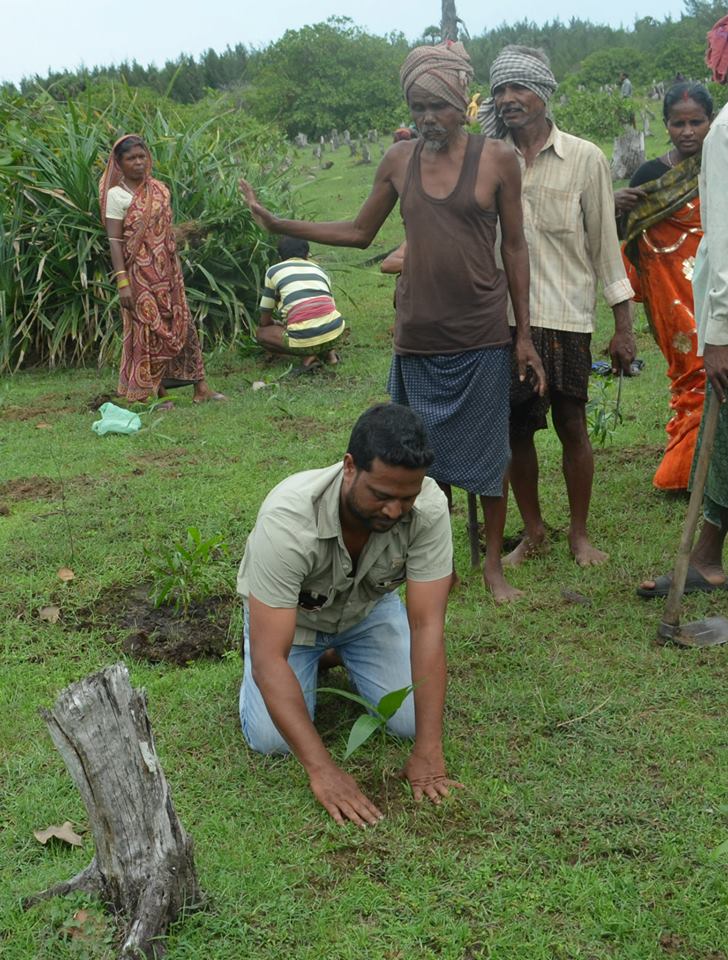 |
 |
These photographs have been taken from Puthuthottam area of Valparai in Tamil Nadu (India). Irresponsible tourism whereby wastes are strewn across the country side is posing a real danger to the lives of the Lion Tailed Macaques.
A Schedule I listed species under the Wildlife Protection Act 1972. IUCN lists it as Endangered as the total number of mature individuals is less than 2,500 with no subpopulation having more than 250 mature individuals. It is endemic to the Western Ghats hill ranges in the states of Karnataka, Kerala and Tamil Nadu from the southwestern India from the Kalakkadu Hills,. The total wild population is estimated to be less than 4,000 individuals, made up of isolated subpopulations which are small and in forest fragments that are isolated from each other.
The major threat to this species today is habitat fragmentation, with many of these fragments being further decreased. In the past, habitat loss was due mainly to timber harvest and the creation of exotic plantations such as tea, eucalyptus and coffee. Habitat degradation seems to the biggest threat to the conservation of lion-tailed macaques wherever they occur in Kerala. In private forests and plantations, change in land use is a problem for the species. Hunting is a second major threat, especially in certain parts of its range. Now with urban wastes posing a serious hazard there is an immediate need for proper management of their habitats.
Appeal is issued to intervene and take up this issue at appropriate forums.
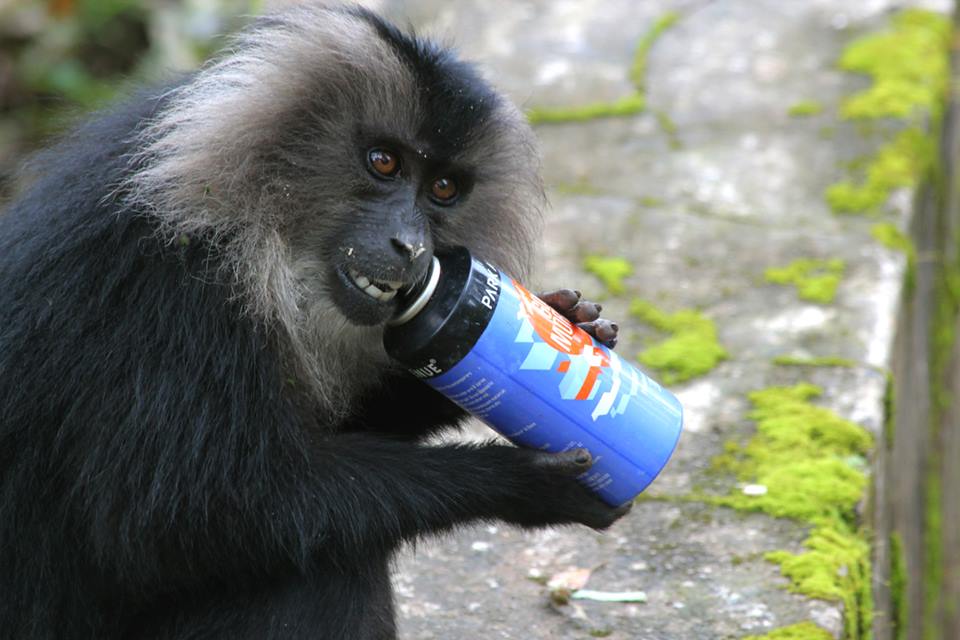 |
WILDLIFE AWARENESS CAMP- organized by WILD ORISSA
The Wildlife Awareness Camp was successfully organized by Wild Orissa at the St. Xaviers School Puri on the 13th August 2013. This voluntary effort was appreciated by the school authorities. A debate competition on wildlife conservation was organized for junior and senior sections. The topics were "How Can I Save Wildlife' for juniors and 'Indiia's Wildlife Crisis' for seniors. There was overwhelming response from the students.
Wild Orissa proposes to continue with similar sensitization programs in coming days at other places and schools/colleges.
From Wild Orissa Shri Akash Ranjan Rath, Shri Chinmaya Bhujabal, Shri Dilip Kumar Nayak Dilip Dillip Artist, Shri Surendranath Kar and Shri Gadadhar assisted.
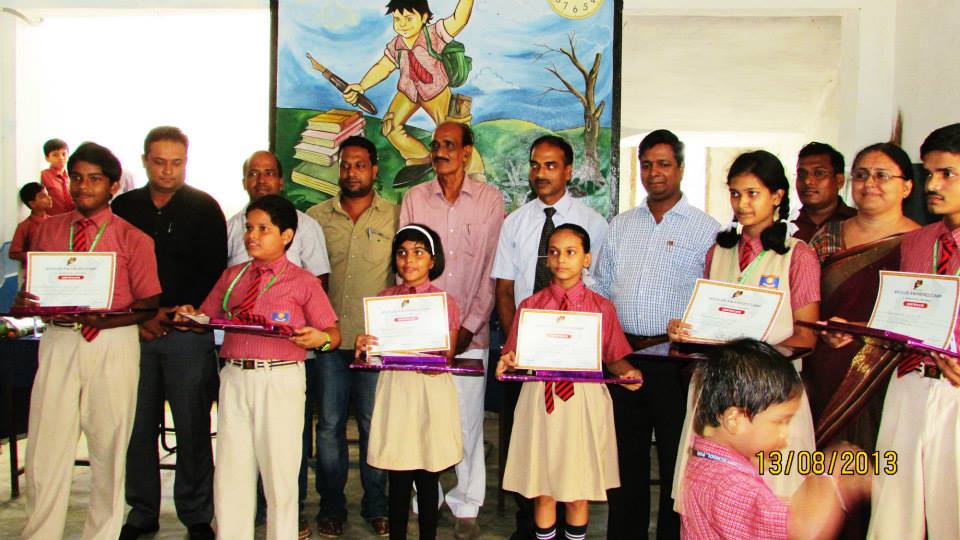 |
INTERIM RELIEF BY WILD ORISSA FOR CATTLE KILLED BY TIGER IN ROURKELA FOREST DIVISION AREA IN ODISHA
An aggrieved owner of a cattle being paid interim compensation by Wild Orissa in association with the Rourkela Forest Division. Here Wild Orissa Member Diptiranjan Patra is seen with the beneficiary.
Instances of cattle killed by tigers and leopards come to notice in the state of Odisha of and on. In forest areas inside wildlife sanctuaries/tiger reserves/national parks/etc. such instances are better monitored and handled as certain outlay is provided for compensation. However in areas outside the protected area ambit situation can become grave if not tackled expeditiously. A timely payment/compensation could save the life of a tiger/leopard.
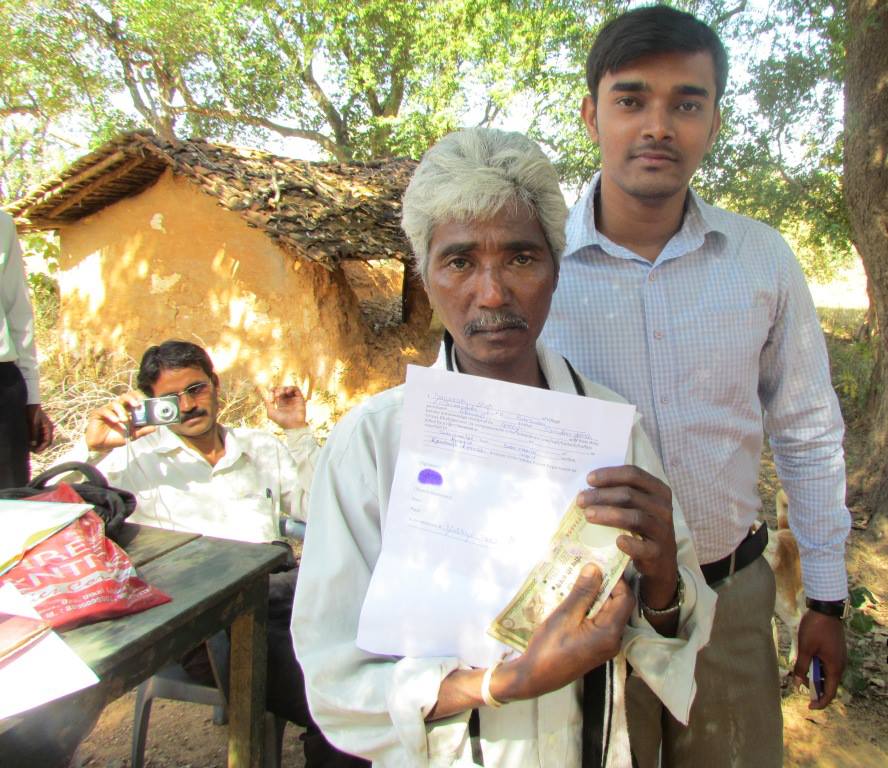 |
The famed bird protection committee (Sri Sri Mahavir Pakshi Surakshya Samiti) of Mangalajodi (constituted in 2000). Members of SSMPSS with Shri Nanda Kishore Bhujabal Governor Tangi Regional Chapter of Wild Orissa, and other members of Wild Orissa.
This little known village on the shores of Chilika Lake is now an global concern area attracting visitors from across. One of India's successful poachers' driven initiative by Wild Orissa, today it is a subject matter of research from different disciplines.
Mangalajodi is an Important Bird Area under the IBCN.
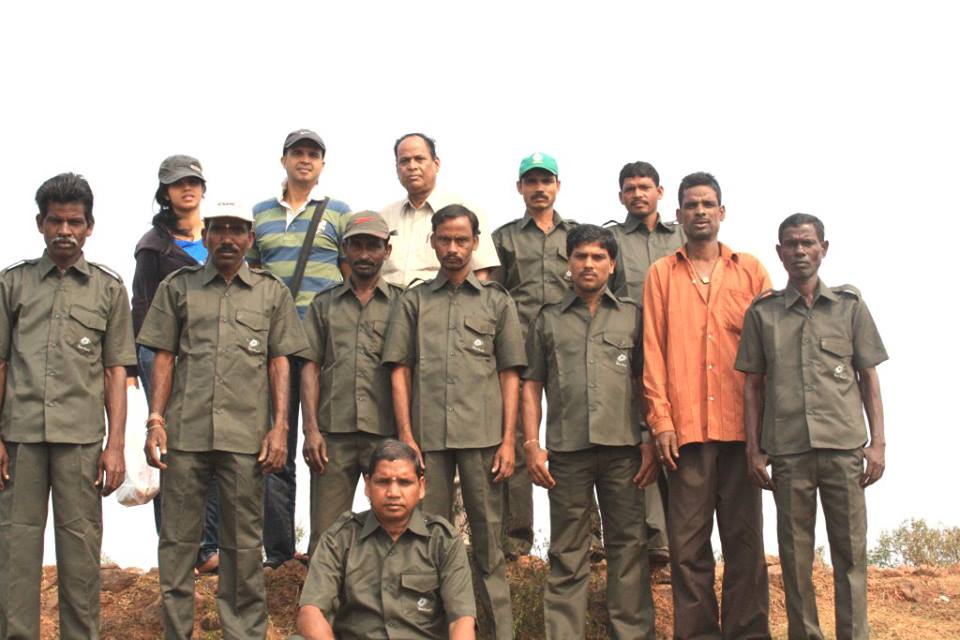 |
Wild Orissa has come out with a publication on wildlife recently. Titled Aranya it is a collection of articles on wildlife conservation. This book is an effort to reach a wider audience wherein focus has been provided on possible alternate strategies and certain practices which could be replicated on a larger canvas. It draws heavily on the experiences of people from different walks of life including past senior functionaries from the Forest and other Departments, some current government functionaries, research institutions, wild life enthusiasts and most importantly people who have firsthand experience of the problems at hand. Interesting chapters are on Odisha’s conservation initiatives, need for more space for tigers in Odisha, the novel Mangalajodi bird protection interventions, critical Similipal suggestions, vanishing Wild Buffaloes of Central India, Wildlife Forensics, etc. The sale proceeds of this publication will be utilized for financing wildlife conservation activities of the organization.
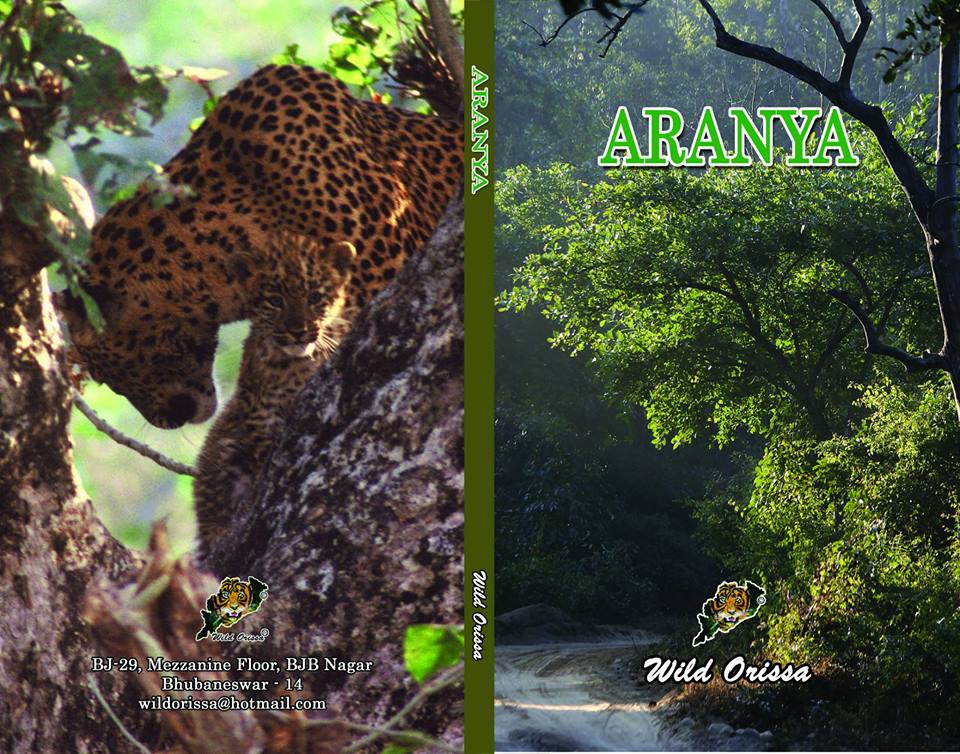 |





